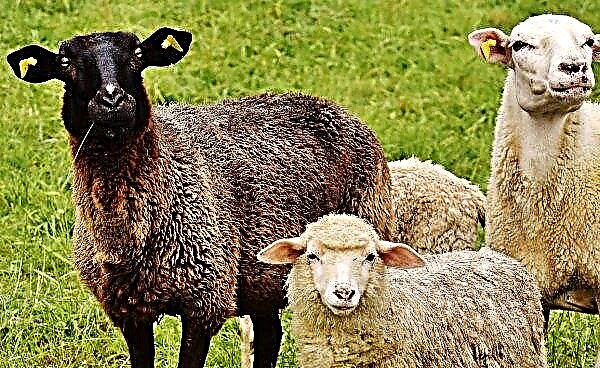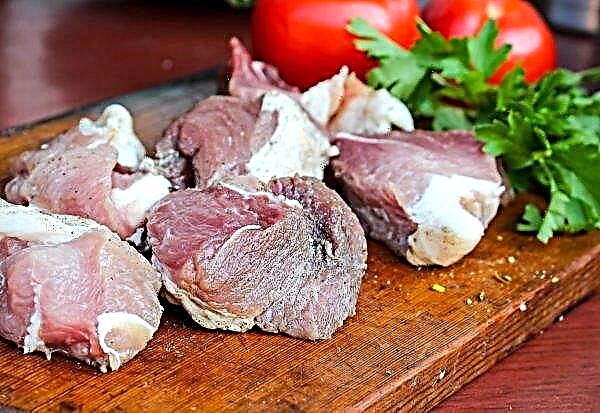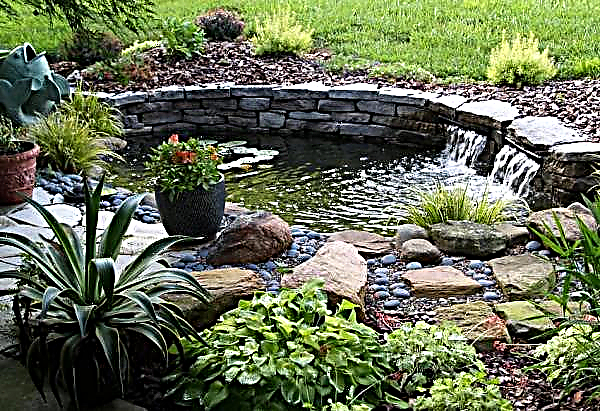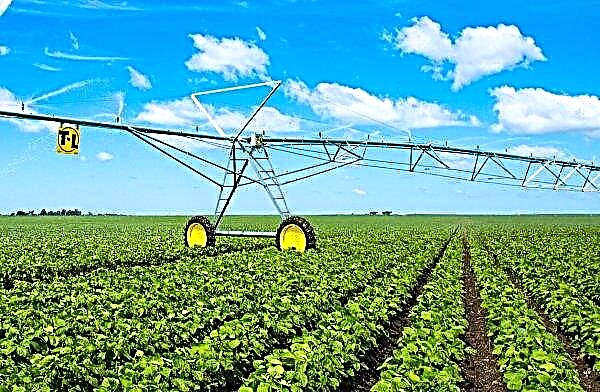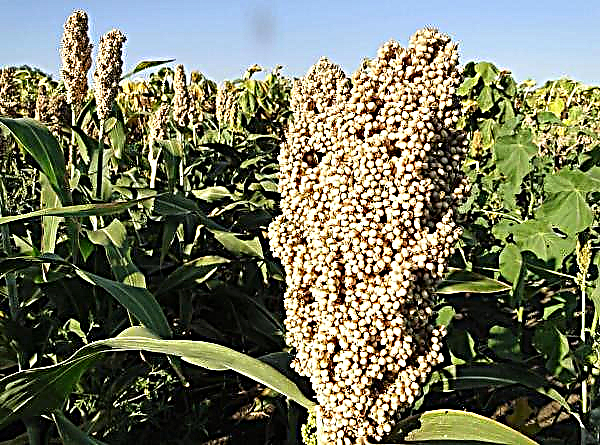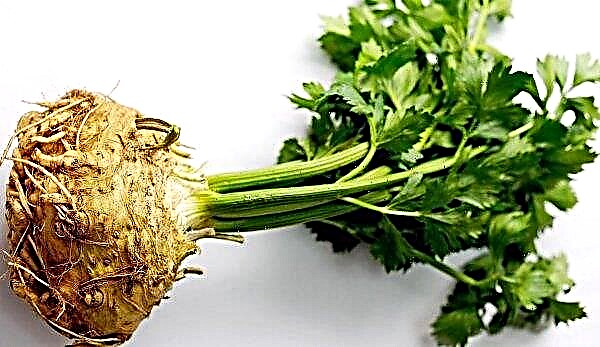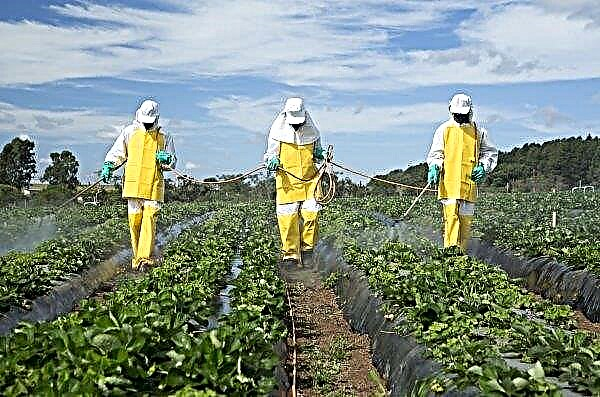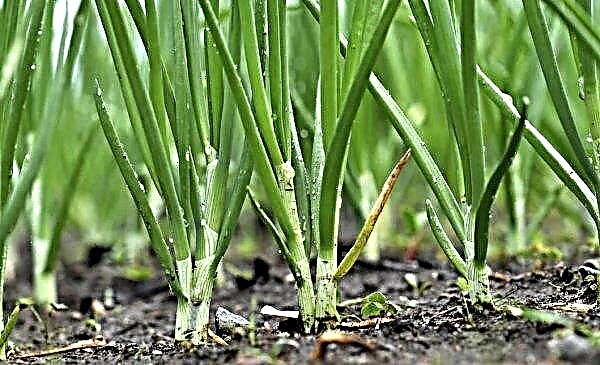Gladioli are one of the most common flowers in Russian flower beds, which is largely due to their attractive external data and the comparative simplicity of growing. However, in order to get a worthy result of their work, it is useful for each grower to know how to plant and care for this crop properly, in particular with the use of adult children. What are these parts like, when and how is it best to harvest them, and at what time to plant them in an open area - more on this later.
What are gladiolus babies
It is no secret that gladioli can be propagated both by seeds and bulbs, harvesting suitable healthy specimens for the winter. A baby is an organ of vegetative propagation of a plant that appears en masse on the lower part of the corm near the end of its growing season.

Based on the size of the children, these small nodules are divided into several groups:
- specimens with a size of 5–10 mm, that is, of the first category (capable of bringing tuberous bulbs of the first or second parsing in the future, that is, 2.5–3.2 cm in diameter);
- varieties with a size of 3-5 mm (from such small material in the first year after planting you can get only corms of the third order, that is, no more than 2.4 cm in diameter).
In the first case, the abundance and splendor of flowering of gladioli from such children will be more impressive, but in the second case, the flowers will appear relatively later and most buds in the inflorescence may not open.
Important! Unlike adult flowers, gladiolus babies are quietly stored all winter, while maintaining their germination ability, often at 100%.
With the help of children of gladioli it is possible to achieve several important tasks at once:
- maintain and update existing varieties of flowers;
- increase the number of planted specimens, including for sale;
- adapt new, possibly exotic plant varieties to local growing conditions (when cultivating flowers from children, the chance of their survival in the territory is much higher, including due to increased resistance to ailments and pests).
In order to achieve the most positive result from the performed actions and to grow strong and beautiful flowers, it is worth paying due attention to this process already at the stage of digging the future planting material, not to mention providing suitable conditions for the grown plants in the future.

How to dig
Before removing corms from the ground, using a secateurs or sharp garden shears, you need to trim the stem and all leaves of the plant, leaving only a small stump above the ground.
Then, retreating from the central part of the gladiolus 20 cm, it is necessary to stick a pitchfork into the soil and carefully pull out a lump of earth together with the bulbs, shifting it onto a prepared dense tarpaulin, film or any other durable material. After slightly drying the soil, the bulbs are removed from it, the children are selected and their roots are removed.
Important! Bulb cultures should be dug only in warm and dry weather, so that their individual parts do not decay due to high humidity.
In the future, from the prepared material it is necessary to select only whole, not damaged by diseases and pests, burning all the "substandard". If bulbs with gladiolus kids remain in the garden, next season you can find sprouted flowers in the most inappropriate places, since they successfully propagate by self-sowing.

Storage
Before harvesting small children of gladioli, they need to be washed (along with corms), separated from the main part and dried, laid out on a dry and clean surface in a warm place. The drying time is until mid-November, after which the planting material is sorted by size and laid out on paper bags.
Optimum storage temperature - not more than + 15 ° C, and if you manage to maintain temperature values within + 5 ... + 10 ° C, then good germination and normal development of children can be hoped for two years after harvesting the material.
When to plant kids
The specific time of planting is directly related to the characteristics of the region of cultivation of gladioli. In areas of the middle zone, such actions begin already in late April or early May, while in the more northern territories of Russia it is better to postpone flower planting until mid or even the end of May.

In order not to be mistaken in your calculations, it is better to focus on the soil temperature: as soon as it rises above + 10 ° C - you can prepare the kids to land in the open. Growing gladioli at home, the choice of planting dates is not so critical, so it all depends on personal preferences and the convenience of the grower.
Growing gladioli from children at home
The process of growing these plants for seedlings cannot be called too complicated, but in order to get really strong gladioli with high decorative qualities, it is worthwhile to adhere to some requirements for the preparation and direct planting of the planted material.
In the case of these flowers, special attention should be paid to peeling children, growing seedlings and transplanting them into the open ground. True, the further process of caring for growing seedlings, up to the moment of their planting in open ground, is no less important. Of course, before performing any action, you should learn more about the mentioned stages of the cultivation of gladioli.
Did you know? Legend has it that the first gladioli appeared after the swords of two loyal gladiator friends Sevt and Teres turned into them, who refused to fight among themselves and were sentenced to death for it.
Peeling
With a careful examination of each dried baby, it is easy to notice that its surface is covered with a thin but strong enough skin that is designed to protect the central part from mechanical damage during storage. Because of it, the process of sprouting landed children can be delayed in time (sometimes for a month), therefore, before being placed in the ground, it is recommended to clean each prepared specimen from such a shell.

You can remove it manually, but with a large amount of material prepared, this will take a lot of time, and even the slightest careless movement can damage the inside of the children and especially their growth points, which will cause problems with growing flowers (some of the children may just not rise).
It will be possible to ease the task of preparing sorted specimens by pre-germinating them, and at home, both elevated room temperatures (about + 20 ° C or a little more) and reduced values up to + 15 ° C are equally suitable for this.
Seedlings
For seedlings of gladioli children, they are planted in late winter or early spring, having prepared suitable planting containers in advance and observing a few simple rules:
- if possible, for each seed, prepare a separate container filled with a nutrient substrate (if transplanted to a constant place of growth, this will help reduce the likelihood of damage to the root system of each grown seedling);
- in the first time after planting, it is better for a young culture to provide cool conditions for growth and development, maintaining temperature indicators within + 5 ... + 15 ° С;
- when using cluster or pot cultivation, seedlings should be watered only in a pan, always with a control of the substrate moisture level;
- Energy-saving lamps are best suited for lighting plantings, but lighting can be arranged no earlier than after the first sprouts emerge from the children.
The depth of incorporation of children gladioli in the soil is about 2-3 cm, after which the soil surface must be sprayed with water at room temperature and cover the boxes with a film to create greenhouse conditions.
 If you plant at the end of winter, then under favorable conditions on the street, already in April it will be possible to plant grown plants in a selected open area.
If you plant at the end of winter, then under favorable conditions on the street, already in April it will be possible to plant grown plants in a selected open area.
Outdoor landing
Planting of gladiolus seedlings on the site begins with the organization of the hole and previously collected children. In moderately nutritious areas, you do not need to fertilize the soil at the planting site, just organize a groove with a depth of 5–9 cm. Planting to a shallower depth can result in stunted plants due to insufficient moisture during cultivation.
Did you know? The first interspecies varieties of gladioli were obtained only at the beginning of the twentieth century, thanks to the efforts of the English botanist W. Herbert. The plants used by him for crossing were plants of South African species of these flowers.
Having moistened the trench from the watering can with the nozzle, do the following:
- Wait until the water is absorbed and place the grown seedlings in the groove, keeping at least 10-15 cm of free space between adjacent plants.
- Fill the planting material with the remaining soil and firmly compact its surface to create the most dense contact of the earth with the underground part of the plant.

If necessary, mulch the surface of the bed with sawdust, leaving only the upper shoot free from mulch. Often this is relevant only in cases where there is a high probability of quick drying of the soil, and it is not possible to water it every time. To plant gladioli in this way is most convenient, as many gardeners have seen from their own experience.
Care
Caring for children and gladioli emerging from them is based on standard measures: watering, fertilizing, caring for the soil and preparing plants for wintering, which in this case involves moving the bulbs to the storehouse for the entire cold season.
The first watering is carried out shortly after sprouts sprout from the children, and after another 1-2 days, you can carry out the loosening of the substrate, gently fluffing the surface of the soil around this sprout (deepen the tool into the ground preferably not more than 1-2 cmotherwise there is a chance of damage to the root system of the culture)

At the same stage, you can sprinkle the flowers with a small layer of humus, which protects them from weeds, but the first full dressing of flowers is performed no earlier than 30 days after germination of healthy sprouts. As a suitable nutrient mixture for gladioli, compositions with a high content of ammonia and nitrogen are excellent, among which urea is considered one of the most popular.
Check out

Before grafting plants, it is diluted in water in a ratio of 15 g per 10 l of pure liquid. Ready solution will be enough to fertilize 0.5–1 m² of plantings.
In the future, seedlings can be fed with "green" organic fertilizers dissolved in water.
After another three weeks, mineral compositions with microelements, various phosphates and nitrate are allowed to be introduced into the soil.
The amount and type of fertilizer used for gladioli will depend on the type of soilon which flowers grow, but both of the described options for top dressing, it is desirable to carry out a month after the germination of gladioli.
In the case when, during the flowering period of gladioli, their young tubers throw arrows, such neoplasms should be removed immediatelyotherwise the bulb will not be able to get the maximum amount of nutrients and bring a good harvest next year.

The tubers obtained from the children begin to be dug up in the beginning of autumn, approximately in the middle of September (for medium growing regions). After the separation of healthy children from the bulb, the process repeats, which in the future allows you to get even more new beautiful gladioli.
Useful Tips
In addition to observing the basic rules for the preparation and planting of children of gladioli, there are several less well-known, but at the same time very important tips for performing all the actions.
The main ones include the following:
- To prevent damage to plants by fungal ailments, once every several years it is useful to treat corms with fungicidal preparations chosen at their discretion (for example, “Topaz”).
- It is advisable to prepare a place for a spring planting of culture from the fall, digging up the soil on the bayonet of a shovel, that is, about 35 cm in depth. In the spring, as soon as the soil warms up enough, it remains only to fluff up the substrate and organize trenches suitable for plants. The temperature of the soil is measured at a depth of at least 5–7 cm and, if its values are satisfactory, you can proceed to the planting of seedlings of flowers.
- When digging up plants from a flower bed, it is forbidden to pull them by the stalk and pull them by the leaves, because the rhizome and gladioli babies suffer from vibration (you can simply lose them).
- When stored in a city apartment, the collected planting material should be stacked in cardboard boxes with holes (you can use shoe boxes), after wrapping each tuber in a cotton cloth or paper.
- In the place of winter storage of corms, it is necessary to maintain the temperature at the desired level, trying to ensure that it does not exceed + 10 ° C or, in extreme cases, + 15 ° C.
Video: How to plant gladioli babies
In general, growing gladioli from children cannot be called a very difficult and difficult task, however, in order to get the highest quality planting material and achieve its active growth and development, you will have to adhere to the above recommendations for proper planting and further care of plants.

